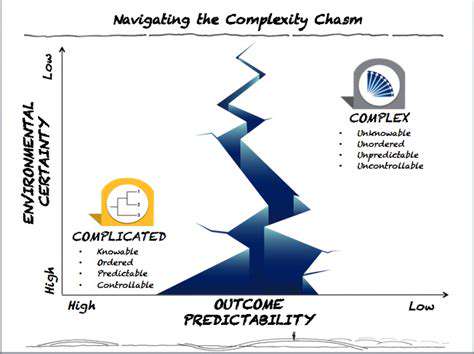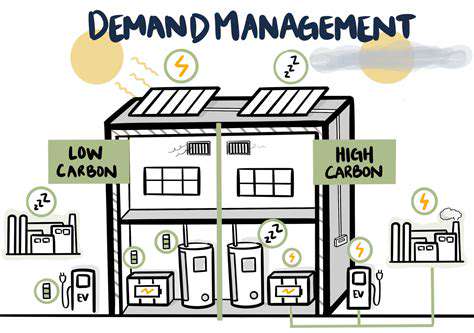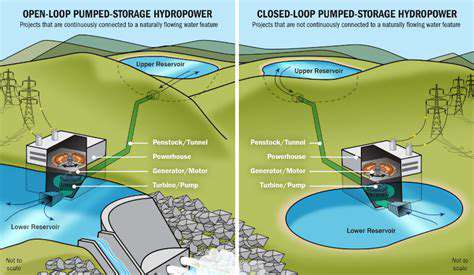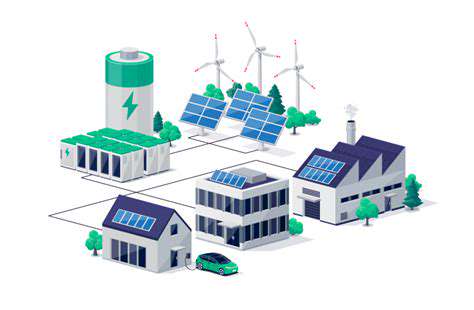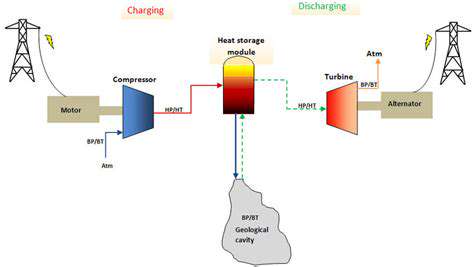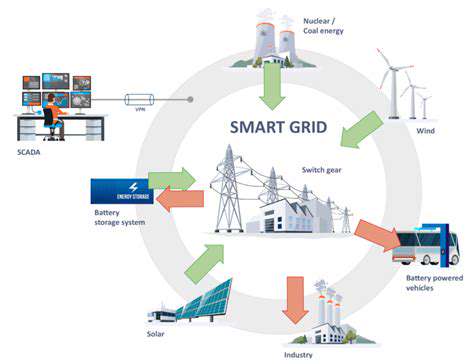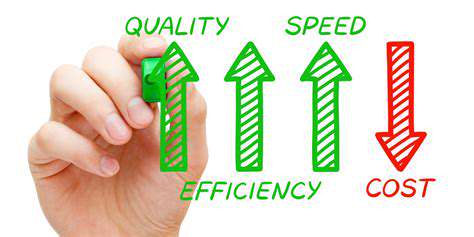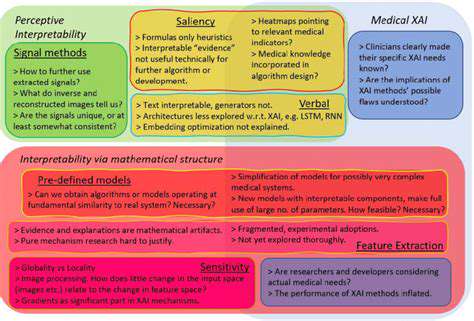The Future of Energy Storage: Trends and Predictions
Modern devices, from smartphones to electric vehicles, rely heavily on lithium-ion batteries (LIBs) as their primary energy source. These batteries have become indispensable due to their impressive energy density, longevity, and established safety protocols. However, challenges persist, including lithium's scarcity and expense, alongside the necessity for ongoing research to enhance performance under extreme conditions and high-power scenarios.
Researchers are diligently working to refine existing LIB chemistries by experimenting with innovative electrode materials and electrolytes. These efforts aim to boost energy capacity, prolong cycle life, and strengthen safety measures, addressing current limitations that restrict broader adoption in demanding applications.
Solid-State Batteries: A Promising Future
Emerging solid-state battery technology shows remarkable potential to overcome the drawbacks of traditional lithium-ion systems. By replacing volatile liquid electrolytes with solid alternatives, these batteries dramatically improve safety while enabling higher energy storage and faster recharge times. Although still in developmental phases, early indicators suggest transformative advancements in energy storage capabilities.
Beyond Lithium: Exploring Alternative Chemistries
While lithium-ion remains dominant, scientists are actively investigating other battery formulations. Sodium-ion, magnesium-ion, and flow batteries each present unique benefits and trade-offs. For instance, sodium-ion batteries capitalize on sodium's abundance, potentially reducing production costs. This pursuit of sustainable, cost-effective alternatives is fueling innovation in energy storage solutions.
Advanced Materials and Manufacturing Techniques
Breakthroughs in material science are revolutionizing battery components, from electrodes to electrolytes. Concurrently, manufacturing processes are becoming more sophisticated, aiming to streamline production, enhance scalability, and lower costs. Cutting-edge nanotechnology is facilitating the creation of more efficient, durable battery elements, potentially accelerating the adoption of next-generation energy storage systems.
The Role of Energy Storage in a Sustainable Future
Advanced battery technologies extend beyond technical improvements; they're instrumental in building a sustainable energy ecosystem. As these systems become more efficient and affordable, they'll facilitate renewable energy integration, stabilize power grids, and support widespread electric vehicle adoption. This pivotal role underscores the critical need for sustained investment in battery research and development.
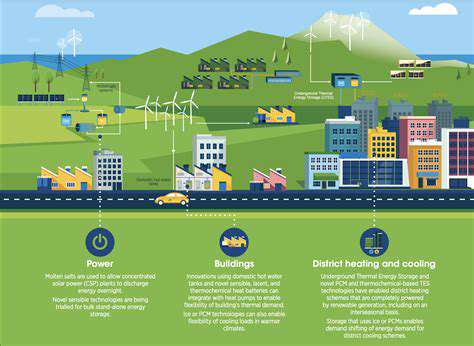
The Impact of AI and Machine Learning on Optimization
AI-Powered Predictive Maintenance
Artificial intelligence is transforming energy storage maintenance through predictive analytics. By processing sensor data from batteries and related components, AI can detect subtle anomalies that may indicate impending failures. This proactive strategy minimizes downtime, reduces repair expenses, and extends system lifespan, ultimately enhancing grid reliability.
Such predictive capabilities represent a paradigm shift from traditional reactive maintenance. By anticipating issues before they occur, operators can schedule timely interventions, preventing costly disruptions and optimizing system performance.
Optimizing Energy Storage Capacity
Sophisticated AI algorithms analyze consumption patterns to forecast future energy needs with remarkable accuracy. This enables precise sizing and strategic placement of storage systems, eliminating unnecessary overcapacity while maximizing return on investment.
Enhanced Battery Management Systems
Intelligent battery management systems leverage real-time data to optimize charging cycles, preventing damaging conditions like overcharging. This dynamic adjustment capability significantly improves energy efficiency and extends battery service life while reducing maintenance demands.
Improved Grid Stability and Reliability
AI models enhance grid performance by intelligently balancing energy flows in response to fluctuating supply and demand. By processing data from diverse sources including renewable generators and consumption monitors, these systems enable real-time adjustments that maintain grid equilibrium.
Automated Load Balancing and Forecasting
Advanced algorithms automate load distribution across the grid, anticipating demand patterns to optimize storage deployment. This automation not only reduces grid stress but also improves renewable energy integration and price prediction accuracy.
Automated System Control and Management
AI-driven automation streamlines energy storage operations, minimizing manual oversight while maintaining optimal performance. These intelligent systems continuously adapt to changing conditions, ensuring efficient response to fluctuating energy requirements.
Reduced Operational Costs
Through predictive maintenance and optimized operations, AI significantly lowers long-term expenses. The combined benefits of extended component life, reduced manual intervention, and improved system efficiency create compelling economic advantages for energy storage projects.
The Crucial Role of Infrastructure and Policy

Foundation for Economic Growth
Economic vitality fundamentally depends on robust infrastructure. Efficient transport networks, reliable power grids, and advanced communication systems form the backbone of business operations, enabling commerce, investment, and innovation. Well-planned infrastructure projects represent strategic investments that create employment, stimulate economic activity, and elevate living standards while fostering technological progress.
Facilitating Social Progress
Quality infrastructure directly impacts social welfare by ensuring access to clean water, sanitation, and healthcare services. Disaster-resilient infrastructure, including flood defenses and emergency networks, plays a critical role in protecting communities during crises, minimizing both human and economic losses.
Enhancing Quality of Life
Modern infrastructure significantly improves daily living. Efficient public transport reduces commute stress, while well-maintained roads enhance safety and connectivity. Thoughtfully designed public spaces and recreational facilities foster community engagement and improve overall livability, creating more attractive and cohesive neighborhoods.
Driving Technological Advancement
Infrastructure serves as the platform for technological innovation. High-speed digital networks accelerate information exchange, while specialized facilities like data centers support cutting-edge research in AI and big data analytics. These technological breakthroughs subsequently drive efficiency gains across multiple sectors, fueling economic growth and productivity improvements.
The Integration of Energy Storage into the Smart Grid
Enhancing Grid Reliability
Energy storage integration strengthens grid resilience by buffering supply-demand imbalances, particularly during peak periods. This capability not only prevents instability but also ensures continuous power for critical services during emergencies or natural disasters.
Improving Grid Efficiency
Smart grid storage systems optimize energy distribution, reducing infrastructure strain and minimizing waste. Their dynamic response capabilities enable real-time balancing of energy flows, significantly improving overall system efficiency.
Supporting Renewable Energy Integration
Storage solutions address renewable energy's intermittency by storing excess generation for later use. This crucial function facilitates greater renewable penetration while reducing reliance on fossil fuel backup.
Optimizing Peak Demand Management
Strategic energy storage deployment alleviates peak demand pressures, lowering electricity costs and deferring expensive capacity upgrades. This targeted approach maximizes existing infrastructure utilization.
Facilitating Distributed Energy Resources
Storage systems empower decentralized energy sources like rooftop solar, enabling their effective grid participation. This distributed approach enhances system resilience while promoting sustainable energy practices.
Enhancing Grid Security
Integrated storage provides critical protection against cyber and physical threats by isolating compromised grid segments, maintaining essential services during disruptions.
Unlocking New Market Opportunities
Storage-enabled smart grids create innovative business models, from energy trading platforms to demand response programs. These emerging markets stimulate economic growth while accelerating the clean energy transition.
